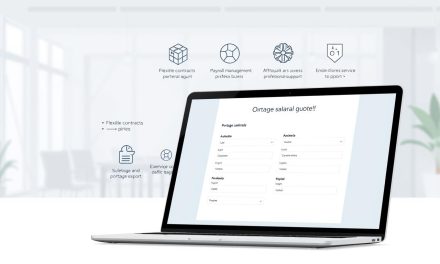Imagine scrolling through your feed and seeing a post that perfectly captures your expertise. It feels authentic, polished, and impossible to ignore. That’s the power of a well-crafted online identity. For freelancers, this isn’t just about visibility—it’s about creating trust in a crowded marketplace.
Recent studies show that 70% of businesses prioritize platforms like LinkedIn and Instagram when vetting independent professionals. Your profile isn’t just a resume—it’s a dynamic portfolio that showcases your skills and values. A strategic approach can turn casual viewers into loyal clients.
We’ll explore how to align your content with your goals, from choosing the right channels to crafting posts that resonate. You’ll learn why consistency in voice and visuals matters, and how engagement metrics directly impact opportunities. Let’s transform your online space into a magnet for meaningful connections.
Table of Contents
Key Takeaways
- A unique online identity helps you stand out in competitive markets.
- Consistent branding increases credibility and client trust.
- Platform-specific strategies maximize visibility and engagement.
- Analytics tools provide actionable insights for profile optimization.
- Balancing professionalism with personality strengthens audience connections.
Introduction to a Robust Social Media Strategy
Building a digital footprint goes beyond posting—it’s strategic communication. For independent professionals, 70% of closed deals originate from online interactions, according to recent industry surveys. This underscores why a deliberate approach isn’t optional—it’s foundational for growth.
Understanding the Importance of Online Visibility
Your digital presence acts as a 24/7 storefront. Without clarity in your strategy, even exceptional skills risk getting lost in the noise. Tailoring content to resonate with your target audience ensures you attract clients aligned with your expertise.
Aligning Your Strategy with Client Acquisition Goals
Effective plans bridge visibility and action. For example, focusing on educational posts builds authority, while case studies showcase real-world results. Track metrics like engagement rates to refine tactics over time.
| Strategy Focus | Content Type | Client Conversion Rate |
|---|---|---|
| Educational Value | How-to Guides | 34% |
| Portfolio Showcase | Case Studies | 28% |
| Community Building | Interactive Polls | 22% |
Balancing authenticity with data-driven decisions creates lasting connections. As one marketing leader noted: « The right mix of personality and professionalism turns profiles into pipelines. »
Identifying the Right Social Media Platforms
What separates thriving professionals from those struggling to be seen online? Often, it’s their ability to match their expertise with the right digital spaces. Selecting channels that align with your skills and audience needs is critical for maximizing impact.
Evaluating Major Platforms Like Facebook, Instagram, and LinkedIn
Each major platform serves distinct purposes. LinkedIn excels for B2B networking, with 89% of decision-makers using it to vet service providers. Instagram prioritizes visual storytelling, ideal for showcasing design or photography work. Facebook’s community-focused groups help build long-term client relationships through discussions.
Considering Niche-Specific Media Platforms
Specialized networks like Behance (for creatives) or GitHub (for developers) attract targeted audiences. These spaces often yield higher-quality leads due to their focused user base. For example, a graphic designer might gain more relevant opportunities on Dribble than general platforms.
| Platform Type | Audience Focus | Best For |
|---|---|---|
| Major Platforms | Broad, diverse users | Brand awareness & networking |
| Niche Platforms | Industry-specific professionals | Targeted lead generation |
| Hybrid Tools | Cross-platform management | Scheduling & analytics |
Use these criteria to choose effectively:
- Audience alignment: Where do your ideal clients spend time?
- Content format: Does the platform support your work style (video, text, visuals)?
- Analytics access: Can you measure engagement trends?
Platform-specific management tools like Hootsuite simplify cross-channel posting. As one UX designer noted: « Focusing on two high-performing platforms beats spreading thin across six. »
Consistency and Quality in Content Creation
Balancing regular updates with polished material isn’t just a goal—it’s a necessity for standing out. Your content acts as a bridge between your expertise and your audience’s needs. Without structure, even brilliant ideas risk getting lost in the noise.
Benefits of Regular High-Quality Posts
Algorithms reward consistency, but audiences demand value. Posting daily won’t help if your material lacks depth. For example, a well-edited tutorial video generates 3x more shares than text-only updates. Focus on these elements:
- Relevance: Address your audience’s pain points directly.
- Visual appeal: Use crisp graphics or short videos to simplify complex topics.
- Actionable insights: Provide clear takeaways viewers can apply immediately.
As marketing strategist Lena Torres notes: « Aim for three stellar posts weekly rather than seven mediocre ones. Quality builds authority; quantity builds fatigue. »
Developing a Content Calendar
A calendar transforms chaotic posting into strategic storytelling. Start by mapping key themes to specific dates—like industry events or seasonal trends. Tools like Trello or Notion help track deadlines and repurpose existing material.
Consider these steps when planning content:
- Block time for brainstorming and editing
- Mix formats (videos, infographics, case studies)
- Analyze performance metrics monthly
Investing 2 hours weekly in scheduling saves 8 hours of last-minute scrambling. Over time, this discipline turns sporadic engagement into loyal followership.
Engaging with Your Audience Effectively
Your audience isn’t just watching—they’re waiting to connect. Authentic dialogue turns passive viewers into invested partners. Research shows profiles that prioritize interaction see 40% higher follower retention over six months.
Building Trust Through Meaningful Interactions
Trust grows when you listen as much as you speak. For example, addressing commenters by name personalizes exchanges. Sharing user-generated content, like client success stories, reinforces community bonds.
Daily engagement habits matter. A quick morning check-in or thoughtful reply to questions shows reliability. As digital strategist Clara Dupont notes: « People remember consistency more than perfection. »
Responding to Comments and Encouraging Feedback
Timely responses signal respect. Aim to reply within 24 hours—72% of users expect this. Use feedback to refine your approach. If multiple followers ask about pricing, create a FAQ post.
| Interaction Strategy | Action | Outcome |
|---|---|---|
| Daily Check-Ins | Respond to 5-10 comments/day | +28% follower growth |
| Polls & Surveys | Ask for opinions weekly | 35% higher engagement |
| User-Generated Content | Feature client work monthly | Strengthened community ties |
Balance responsiveness with boundaries. Set specific times for engagement to avoid burnout. Tools like Later’s comment management can streamline the process while keeping your voice authentic.
Utilizing Tools to Enhance Your Social Media Presence
Did you know professionals using automation tools save 6 hours weekly on content tasks? Modern platforms offer built-in solutions to simplify workflows while sharpening your competitive edge. Strategic use of technology turns chaotic posting into measurable growth.
Leveraging Platform-Specific Features and Analytics
Platforms like Hootsuite let you schedule posts across networks in one dashboard. Batch-create content during creative bursts, then auto-publish at optimal times. This consistency builds audience trust without daily manual effort.
Canva’s templates help craft polished visuals in minutes. Customizable designs maintain brand cohesion, whether creating Instagram stories or LinkedIn banners. Pair these with Metricool’s analytics to track which formats drive clicks and conversions.
| Tool | Primary Function | Impact on Efficiency |
|---|---|---|
| Hootsuite | Cross-platform scheduling | Reduces posting time by 65% |
| Canva | Visual content creation | Boosts engagement by 40% |
| Metricool | Performance analytics | Improves strategy adjustments by 55% |
Data reveals patterns invisible to the naked eye. Notice Pinterest pins gain traction on weekends? Shift your scheduling. LinkedIn articles perform best at 10 AM? Automate releases accordingly.
« Tools aren’t shortcuts—they’re force multipliers, » notes digital strategist Élise Bernard. Combine automation with quarterly reviews of metrics to refine your approach. Blend business insights with creative experimentation for sustained momentum.
Avoiding Common Pitfalls in Social Media Management
How many posts does it take to lose a follower? For Erica, a marketing consultant, the answer was three daily sales pitches. Her aggressive approach led to a 42% drop in engagement within two weeks. Strategic management requires balancing visibility with audience respect.
Steering Clear of Overposting and Hard Selling
Flooding feeds with promotions erodes trust. Limit sales-focused content to 20% of your posts—focus on value-driven material like tutorials or industry insights instead. Tools like Buffer help schedule content at optimal times without overwhelming viewers.
| Strategy Type | Post Frequency | Engagement Impact |
|---|---|---|
| Promotional | 1-2x/week | +18% retention |
| Educational | 3-4x/week | +34% shares |
| Community | 2x/week | +27% comments |
Managing Negative Feedback and Staying Professional
Bobby, a web developer, transformed criticism into opportunity. When a client questioned his pricing publicly, he responded: « Thank you for highlighting this—let’s discuss solutions privately. » This approach preserved his reputation and led to a revised service menu.
Key tips for handling disputes:
- Respond within 12 hours to show accountability
- Use neutral language, avoiding defensive tones
- Move heated discussions to direct messages
Regularly audit your content’s tone using tools like Grammarly. A single mismatched post can alienate 15% of your community, according to recent data. Stay consistent, stay professional.
Developing a Personal Brand and Professional Profile
Your brand is your silent ambassador—it speaks before you do. For independent professionals, a cohesive identity across platforms acts as a trust accelerator. Clients gravitate toward clarity, and 84% of hiring managers prioritize profiles with unified visuals and messaging.
Maintaining Consistency Across All Platforms
Imagine your LinkedIn headshot mismatching your website bio. Confusion creeps in. Studies reveal consistent branding increases recognition by 80%. Use identical color schemes, fonts, and tone everywhere—from Instagram captions to email signatures.
Three pillars define strong profiles:
- Visual cohesion: Align cover photos, logos, and design elements
- Messaging alignment: Ensure your « About » sections echo core values
- Platform-specific adaptation: Tailor content formats without diluting your essence
High-quality videos showcasing your process add depth. A polished website with service details and testimonials anchors your digital presence. As marketing expert Julien Lefevre notes: « Your profile isn’t a static resume—it’s a living conversation starter. »
Discover actionable strategies for refining your approach through professional branding techniques. Regular audits ensure alignment as your services evolve. Remember: authenticity paired with precision turns browsers into believers.
Actionable Dos for Building a Strong Presence
Tracy, a copywriter, boosted her client inquiries by 170% in four months using data-driven tactics. Her secret? A blend of strategic content planning and relentless optimization. Let’s explore proven methods to elevate your visibility and conversions.
Implementing High-Impact Content Strategies
Focus on value-first content that solves specific problems. Tracy’s « Tuesday Tip » series—short video tutorials on writing techniques—drove a 45% increase in profile visits. Follow these steps:
- Create weekly how-to guides showcasing your services
- Batch-produce 3-4 posts during creative sessions
- Use carousel posts to break complex topics into digestible slides
« Clients don’t buy expertise—they buy solutions, » notes Tracy. Pair educational content with case studies to demonstrate real-world results.
Using Analytics to Optimize Engagement
Platform insights reveal what works. Marco, a branding consultant, noticed his infographics gained 2x more shares than text posts. He now allocates 70% of his content budget to visual storytelling. Track these metrics:
| Metric | Tool | Action |
|---|---|---|
| Click-through rate | Google Analytics | Refine call-to-action phrases |
| Peak engagement times | Meta Business Suite | Adjust posting schedule |
| Content lifespan | LinkedIn Campaign Manager | Repurpose top-performing posts |
Set monthly review sessions to tweak your approach. Small changes—like shifting posts from mornings to evenings—can yield 20% better results.
Practical Don’ts to Avoid Derailing Your Efforts

What’s quicker than gaining a follower? Losing one through avoidable mistakes. A single misstep—like flooding feeds with promotions—can undo months of trust-building. Industry data shows overposting reduces engagement by 37% within 30 days. Balance is non-negotiable.
Avoiding Overpromotion and Negativity
Hard-selling alienates audiences faster than empty profiles. Limit promotional posts to 1-2 weekly—focus instead on sharing insights or case studies. For example, a designer who replaced 80% of sales pitches with workflow tutorials saw 3x more client inquiries.
Common pitfalls to sidestep:
- Posting identical content across platforms daily
- Ignoring negative comments or responding defensively
- Using stock photos instead of authentic work samples
| Activity | Recommended Frequency | Overposting Impact |
|---|---|---|
| Promotional Content | 1-2x/week | -22% follower growth |
| Educational Posts | 3-4x/week | +41% shares |
| Community Polls | 2x/month | +19% comments |
Ensuring a Balanced and Genuine Approach
Quality trumps quantity every time. One polished case study outperforms five rushed updates. Schedule posts using tools like Buffer to maintain consistency without burnout. Track daily metrics to spot trends—if lunchtime posts flop, switch to mornings.
Key reminders:
- Review analytics weekly to adjust your strategy
- Set a 3-post/day maximum across all platforms
- Showcase skills through client success stories, not just self-promotion
As branding coach Sophie Roux advises: « Your audience connects with people, not logos. Let your work’s value speak louder than sales jargon. » Refine your approach quarterly to align with industry shifts and audience needs.
Tips for Measuring Social Media Success
Numbers don’t lie—they reveal what’s working and what needs refinement. Tracking your progress ensures every post aligns with tangible goals, turning abstract efforts into measurable growth. Start by identifying key performance indicators (KPIs) like engagement rates, click-throughs, and comment sentiment.
Tracking Engagement Metrics and Client Feedback
Platform analytics tools like Facebook Insights and Twitter Analytics offer real-time data on post reach and interactions. Focus on metrics that reflect your strategy goals. For example, if brand awareness is key, track shares and impressions. For lead generation, prioritize link clicks and form submissions.
Quality matters as much as quantity. Analyze comment sections to gauge audience sentiment. Are users asking follow-up questions or sharing frustrations? Tools like Google Analytics help correlate social traffic with website conversions, showing which platforms drive client acquisition.
| KPI Category | Tool | Actionable Insight |
|---|---|---|
| Engagement Rate | Meta Business Suite | Optimize post timing |
| Audience Growth | LinkedIn Analytics | Adjust content themes |
| Conversion Paths | Google Analytics | Refine call-to-action placement |
Industry leaders emphasize aligning metrics with business objectives. Marketing strategist Claire Dubois notes: « If your goal is community building, prioritize reply speed and comment depth over vanity metrics like follower count. »
Regularly review results to refine your management approach. For instance, a 20% increase in saved posts might signal content longevity, prompting you to repurpose top-performing guides. Pair quantitative data with qualitative feedback from client surveys for a 360-degree view.
Need help connecting metrics to revenue? Explore online client acquisition strategies that bridge analytics with actionable growth steps. Remember: effective measurement isn’t about chasing numbers—it’s about cultivating meaningful connections that drive your business forward.
Creating Compelling Content for Targeted Audiences
Ever wondered why some posts stop scrollers mid-swiped? The answer lies in blending purpose with personality. Compelling material educates, entertains, and inspires action—all while reflecting your unique expertise. For professionals, this balance transforms casual viewers into committed clients.
Balancing Educational, Engaging, and Inspirational Content
Start by mapping content types to audience needs. Educational posts like tutorials establish authority. Behind-the-scenes reels build relatability. Inspirational case studies spark ambition. A 3:2:1 ratio works well—three educational pieces, two engaging stories, one motivational highlight weekly.
Platforms demand tailored approaches:
- Instagram: Use carousels to break down complex processes
- LinkedIn: Share client success stories with measurable results
- Facebook: Host live Q&A sessions to foster community
As content strategist Marie Lacroix advises: « Your posts should answer three questions: What do I know? Why does it matter? How can it help? »
Showcasing Your Portfolio to Attract Potential Clients
Your portfolio isn’t just a gallery—it’s proof of capability. Update it quarterly with recent projects, emphasizing challenges overcome. Tag clients (with permission) to boost credibility. Include metrics like project timelines or client ROI to demonstrate impact.
| Platform | Best Portfolio Format | Engagement Boost |
|---|---|---|
| Before/After Reels | +55% | |
| Case Study PDFs | +40% | |
| Behance | Project Breakdowns | +68% |
Review analytics monthly to identify top-performing work samples. Rotate featured projects based on seasonal trends or service demand. Pair visuals with concise captions explaining your creative process.
Enhancing Your Freelance Social Media Presence with Proven Strategies

What if your next post could double your client inquiries? Industry leaders like Tracy and Steve transformed their visibility by combining expertise with measurable tactics. Their secret lies in refining methods through real-world testing and feedback loops.
Implementing Best Practices from Industry Leaders
Tracy, a UX designer, boosted her conversion rate by 220% using A/B testing for post headlines. She prioritized client pain points over generic tips, resulting in 45% more DMs. Steve’s video case studies on LinkedIn generated 18 qualified leads monthly.
Key strategies from top performers:
- Test content formats weekly (polls vs. carousels)
- Use analytics to identify high-performing keywords
- Schedule quarterly skill showcases via live streams
Adapting Tactics Based on Data Insights
Benny, a copywriter, revised his entire content calendar after noticing 68% of his traffic came from Tuesday posts. He now reserves complex guides for mid-week slots and shares quick tips on weekends.
| Professional | Strategy | Outcome |
|---|---|---|
| Tracy (Design) | Interactive portfolio snippets | +90% profile visits |
| Steve (Marketing) | Data-driven post timing | 2.5x engagement |
| Benny (Writing) | Keyword optimization | +140% organic reach |
Track these metrics monthly to refine your approach:
- Click-through rates on service links
- Time spent viewing portfolio items
- Client referral sources
« Adaptation isn’t reaction—it’s strategic evolution, » notes digital strategist Léa Martin. Pair industry insights with your unique workflow to build sustainable growth.
Leveraging Social Media for Client Acquisition
How do top professionals turn online connections into paying clients? The answer lies in strategic outreach and smart platform use. Studies show 73% of professionals secure new projects through targeted engagement in groups and direct messaging. Let’s break down actionable methods to convert interactions into contracts.
Expanding Your Network via Groups and Direct Outreach
Start by joining industry-specific communities. LinkedIn groups focused on your niche see 45% higher engagement than general forums. For example, a graphic designer gained 12 qualified leads monthly by actively participating in design-focused Facebook groups.
Three steps to maximize group value:
- Research active communities: Prioritize groups with daily discussions and client inquiries.
- Offer value first: Answer questions or share free resources before pitching services.
- Personalize connection requests: Mention shared group membership to boost acceptance rates by 60%.
Utilizing Paid Advertising and InMail Opportunities
Platforms like LinkedIn allow precise targeting. A marketer increased conversions by 35% using ads focused on C-level executives in tech startups. InMail campaigns yield 25% higher response rates compared to cold emails.
| Strategy | Cost per Lead | Conversion Rate |
|---|---|---|
| LinkedIn Ads | $18 | 12% |
| Facebook Group Outreach | $0 | 8% |
| InMail Campaigns | $10 | 15% |
Case in point: A web developer landed a $15k project after running a 2-week LinkedIn ad campaign targeting e-commerce businesses. As digital strategist Marc Dupont advises: « Treat every interaction as a first step toward long-term partnerships, not transactions. »
Stay proactive. Dedicate 30 minutes daily to engage with potential clients in groups or via direct messages. Track response patterns to refine your approach monthly.
Conclusion
The difference between obscurity and opportunity online lies in deliberate action. By aligning your content with client needs and maintaining a polished profile, you create pathways for growth. Regular updates paired with meaningful engagement build trust—a cornerstone of successful partnerships.
Analyzing metrics helps refine your approach. Focus on what drives conversions, whether through educational posts or client testimonials. Small, consistent efforts often yield the most significant long-term results.
Your digital identity should evolve as your business grows. Update your website and portfolio quarterly to reflect new skills and achievements. Authenticity combined with strategic planning turns casual viewers into committed collaborators.
Take the first step today: audit one platform profile, schedule three high-value posts, and engage with five industry peers. Progress compounds when you prioritize quality over quantity. Start shaping your future—one intentional post at a time.
FAQ
How do I align my social strategy with client acquisition goals?
Start by defining your ideal client profile and researching their preferred platforms. Tailor content to address their pain points while showcasing expertise through case studies or testimonials. Use LinkedIn polls or Instagram Stories to gather direct insights into their needs.
Which platforms work best for niche-specific freelance services?
LinkedIn excels for B2B professionals, while Behance or Dribbble suit creative fields. Developers often thrive on GitHub or Stack Overflow. Analyze where industry leaders in your field engage most actively and prioritize those channels.
What’s the ideal posting frequency without overposting?
Maintain 3-4 weekly posts on LinkedIn with deep insights, while Instagram may require daily Stories for visibility. Use tools like Hootsuite or Buffer to schedule posts during peak engagement hours identified through platform analytics.
How can I build trust through audience interactions?
Respond to comments within 24 hours, ask open-ended questions in captions, and share user-generated content. Join relevant Facebook Groups or LinkedIn Communities to provide value-first advice without immediate self-promotion.
What common mistakes derail professional credibility?
Avoid deleting negative feedback – address it professionally instead. Steer clear of inconsistent branding across profiles. Never share controversial opinions unrelated to your services. Always maintain a polished bio with clear service descriptions.
How do I balance educational and promotional content?
Follow the 80/20 rule – 80% value-driven posts (tips, industry updates) and 20% direct service promotion. Use carousel posts on Instagram or LinkedIn to showcase project results while embedding subtle CTAs in captions.
Can LinkedIn Groups actually generate quality leads?
Yes, when used strategically. Participate in discussions with actionable insights rather than generic comments. Share free resources like checklists or templates to establish authority before mentioning your services.
What metrics indicate successful audience engagement?
Track comment quality over quantity, profile click-through rates, and direct message inquiries. Use LinkedIn’s Creator Mode analytics or Instagram Insights to monitor follower growth trends and content performance.
How do platform algorithms affect content visibility?
Algorithms prioritize content sparking meaningful interactions. On LinkedIn, long-form posts with comments outperform quick updates. Instagram’s algorithm favors Reels and Stories with high completion rates. Adapt content formats accordingly.
Should freelancers invest in paid social advertising?
Start with targeted LinkedIn Sponsored Content or Facebook Lead Ads once you’ve optimized organic efforts. Set clear objectives like website visits or consultation bookings, using A/B testing to refine ad copy and visuals.





